Baking with sugar substitutes for diabetes provides increased flexibility by removing added concerns and extra effort. Whether you are following a low-carb diet, looking to eat less sugar or wanting to improve your diabetes management then this article can empower you with the knowledge you need to start baking with Xylitol confidently.

When my daughter was diagnosed with type 1 this led to a significant shift in our food choices. Most notably when it came to sweet treats. I soon realised that to achieve the goal of her still enjoying sweet foods, particularly without causing spikes and crashes in her blood glucose levels (which ultra-processed foods sweetened with any form of sugar often do). Therefore the challenge was to up my baking game and start creating sweet treats that would maintain the joy, while also ensuring that each bite was beneficial for her health outcomes.
In this journey, I turned to a variety of sugar substitutes, ultimately favouring xylitol for its minimal impact on blood sugar and because it didn’t necessitate carbohydrate counting or additional insulin dosing. Read on to discover more about type 1 diabetes management, choosing the best sugar substitutes and tips on baking with sweeteners.
Understanding Type 1 Diabetes
Type 1 diabetes is an autoimmune condition where the pancreas produces little to no insulin, a hormone needed to allow sugar (glucose) into cells to produce energy. Without insulin therapy and careful monitoring, blood glucose levels can fluctuate wildly, leading to short-term complications such as hypoglycemia and hyperglycemia, or long-term damage to organs and tissues. For those of us living with this condition or caring for someone who is, understanding and managing dietary intake becomes a fundamental part of everyday life.
Read more about Type 1 Diabetes in the article below

TYPE 1 DIABETES DEMYSTIFIED
Let’s demystify some of the hidden intricacies of living and caring for a person with type 1 diabetes and bust a few myths!
Diabetes, Food & Carb Counting
Food directly influences glucose levels, and carbohydrates have the most immediate impact. Because of this, individuals with type 1 diabetes must carefully balance their food intake, particularly carbs, with their insulin levels—a process commonly known as carb counting. Adjusting to this lifestyle means acquiring a sound knowledge of how different foods can influence blood glucose and requires ongoing vigilance to maintain levels within a safe range. Read more about food and diabetes in the article below:
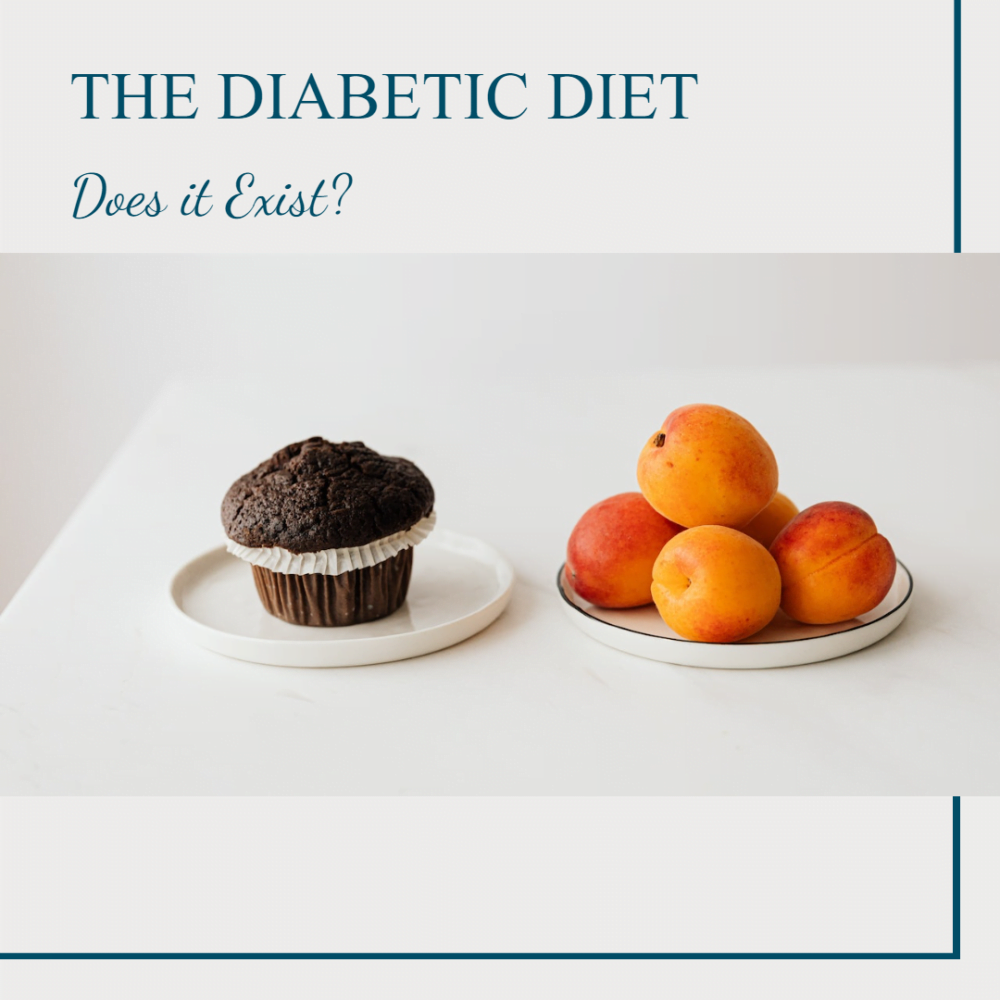
The Diabetic Diet
Navigate through the confusing landscape of the ‘diabetic diet’ by separating fact from fiction. This article delves into the concept of the “diabetic diet”, and our food journey finding balance in the food we eat.
As a mum to a child with type 1 diabetes, I can attest to the challenges of dietary management, particularly as they become teenagers and gain more independence. We must consistently be aware of how each meal and snack can affect her condition. This awareness is not about avoiding sugar but ensuring that we balance her diet to support stable blood glucose levels and the overall well-being that comes with them.
Diabetic-Friendly Baking
For many individuals like my daughter, managing type 1 diabetes involves vigilant monitoring of blood glucose and making choices that stabilise these levels. In baking, this can mean replacing conventional sugar with alternatives that have a low glycemic index, therefore, reducing the likelihood of glucose spikes and crashes. The freedom to enjoy a slice of cake or a homemade cookie in a small way works towards enhancing her quality of life living with diabetes. It allows a little food freedom back in what is a very controlled area of her life.
Make sure to check out 10 BEST SUGAR FREE CAKE RECIPES – ALSO GLUTEN FREE and 10 EASY DIABETIC COOKIE RECIPES – SUGAR FREE & LOW CARB for lots of inspiration!
Whole foods naturally enter the scene as a powerful ally as well. By incorporating more unprocessed grains, nuts, seeds, and fruits into baked goods, we not only diversify the nutrient profile but also contribute to a steadier blood glucose level. This marks a significant stride towards better diabetes control. Such foods, often rich in fibre, help moderate the body’s insulin response, which makes our daily tasks more manageable. Thanks to a careful selection of ingredients like xylitol, we’ve found a delicious balance that serves as a cornerstone of our diabetes management toolkit,(toolkit blog) offering both peace of mind and a world of yumminess.
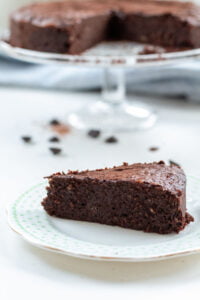
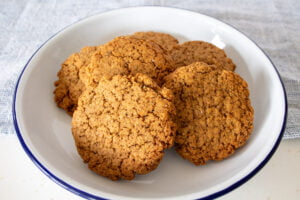



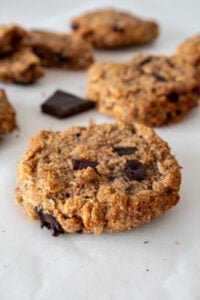
The Role of Sugar in Baking and Diabetes
For individuals living with type 1 diabetes, like my daughter, managing blood glucose is a daily challenge. Sugar, in all its forms, plays a significant role in this balance, as it quickly raises blood glucose levels. Typically, our bodies respond by releasing insulin, but for those who are diabetic, this process doesn’t function normally. Therefore, we must carefully manage carbohydrate intake and insulin dosage. Baking with traditional table and brown sugar adds to this complexity as it requires precise carb-counting and can lead to unpredictable spikes in blood sugar.
Other Names that refined sugar hides under:
| Anhydrous dextrose | Evaporated cane syrup | Malt sugar |
| Agave syrup | Evaporated sugar cane | Malt syrup |
| Agave nectar | Fructose | Molasses |
| Beet sugar | Fructose crystals | Muscovado |
| Brown sugar (light and dark brown) | Fruit juice crystals | Nectar |
| Cane juice | Fruit juice concentrate | Pancake syrup |
| Cane juice solids | Glazing sugar | Panocha |
| Cane sugar | Glucose | Powdered sugar |
| Cane syrup | Glucose syrup | Raw sugar |
| Carob syrup | Golden sugar | Refiners’ syrup |
| Caster sugar | Golden syrup | Sorghum |
| Coconut palm sugar | Granulated sugar | Sorghum syrup |
| Confectioners’ sugar | High-fructose corn syrup (HFCS) | Sucanat |
| Corn syrup | Raw Honey | Sucrose |
| Corn syrup solids | Icing sugar | Sugar |
| Crystalline Fructose | Invert sugar | Superfine sugar |
| Date sugar | Invert syrup | Table sugar |
| Demerara sugar | King’s syrup | Treacle |
| Dextran | Lactose | Turbinado sugar |
| Dextrose | Maple syrup | White sugar |
| Dehydrated cane juice | Maple sugar | Yellow sugar |
| Evaporated cane juice | Maltose |
Moving away from Sugar
Even if you’re not managing diabetes reading the nutrition facts label is something that we should all do. But this is particularly important for people living with diabetes to understand how a food will influence blood sugar. To maintain a balanced diet, my family and I use carb counting—a method that tracks carbohydrates in foods, which directly affect glucose levels.
This technique becomes particularly useful when integrating baking into a diabetic-friendly diet. I ensure that the sweets we enjoy don’t disrupt our glucose control by selecting sugar alternatives that have minimal impact on blood sugar. This adjustment not only eases the management of carbs and insulin but also expands the variety of sweets that can be enjoyed without extra demands and worry. One of the best sugar substitutes I have found for baking is xylitol, as it has a low glycemic index and provides that sweet taste without the rapid blood sugar spikes associated with regular sugar, allowing for more stable blood sugar levels over time.
Including Artificial sweeteners in baking offers greater flexibility, enabling those with diabetes to enjoy desserts without the extra effort and worry. As part of a holistic approach to diabetes care, incorporating these alternatives can lead to better overall blood glucose management and an enhanced quality of life.

How to Choose a Sugar Substitute
When selecting a good sugar substitute for baking, several key factors must be carefully considered for those managing diabetes.
First, identify substitutes with a low glycemic index (GI) that have minimal impact on blood glucose levels. A low GI indicates that the sweetener releases glucose more slowly into the bloodstream, which helps maintain a steady blood sugar level.
Another critical factor is the flavour profile of the substitute, which can dramatically alter the taste of your baked goods. This is really important and we all have different tastes, so what I like may be disgusting for you. Taste each option and note the sweetness level and how closely it resembles the flavour of sugar for you. Some substitutes have a cooling sensation or a slight aftertaste, which could affect the overall enjoyment of the baked goods or dessert.
Other factors to consider are:
- Compatibility with Baking: Establish whether the sugar alternative can withstand the baking process. Certain sweeteners, for instance, may not caramelise or may alter the moisture content of your recipe, leading to different textures.
- Measurement and Conversion: Examine how the substitute measures up against regular sugar. Some require an equal swap, while others need a conversion chart to achieve the correct sweetness level. For instance, a monk fruit sweetener is 100-250 times sweeter than sugar just like steviol glycosides (stevia leaf extract) which is 200-350 times sweeter
- Health Concerns: Assess any possible side effects that may arise with specific substitutes, such as digestive issues, which are occasionally associated with sugar alcohols.
- Nutrition: Consider the nutritional content, if you want it to support weight management is it zero calories? And whether the substitute provides additional health benefits, like dental health improvement — a known benefit of xylitol.
- Cost and Accessibility: Reflect on the cost and how readily available the substitute is at supermarkets, local stores or online retailers, ensuring that it’s a feasible option for regular use.
To learn more about different sugar substitutes in the UK read my article below:

Sugar Substitutes and Diabetes Management
The world of sugar substitutes and type 1 diabetes can be confusing. This guide explores substitutes in the UK and diabetes management
Tips for Baking Success with Sugar Alternatives
Baking with sugar alternatives and natural sweeteners can yield scrumptious treats that friends and family won’t even realise are tailored for a diabetic diet. To guarantee your success in the kitchen, employ a few strategic tactics tailored to baking with sweeteners. First and foremost, familiarise yourself with the sugar substitute you’ve chosen, be it xylitol or another type of low-glycemic sweetener.
Remember not all sugar substitutes are 1;1 replacements for sugar and each brand differs, so always read the brand names information to understand the amount of sugar you need to replace in a recipe.
Factors you should also consider to achieve the best results:
- Precision is Key: Exact measurements matter more than ever when replacing sugar. A kitchen scale can be an invaluable tool, ensuring that you use the right quantity of sugar alternative, as the volume can vary compared to regular sugar.
- Moisture Balance: Sugar alternatives may not retain moisture the same way. You might need to tweak other ingredients, like increasing fats or eggs, to achieve a moist and tender crumb.
- Baking Time Adjustments: Your bake time might be shorter, as sugar substitutes can often bake more quickly. Keep a watchful eye on your oven and perform the toothpick test early to avoid over-baking.
- Texture Tricks: To replicate the texture sugar provides, some recipes benefit from the addition of a small amount of pureed fruit, yoghurt, or even unsweetened applesauce.
- Flavour Enhancement: Since you’re avoiding sugar, consider enhancing flavour for example with vanilla extract, cinnamon, mixed spice or nutmeg, citrus zest or unsweetened cocoa powder — all of which can add depth and richness without extra carbohydrates.
- Gradual Incorporation: When replacing sugar with a substitute, consider doing it gradually. This allows you to adjust to the taste difference and refine your recipes as needed.
Adapting to diabetic-friendly baking is an experiment, filled with trials and triumphs. Remember, practice makes perfect. With each attempt, you’ll learn more about how to craft delightful desserts that maintain blood glucose control while satisfying those sweet cravings.
Xylitol: My Choice of Sweetener to Use in Baking
In my baking journey as a mum with a child who has type 1 diabetes, I’ve chosen xylitol as my preferred sweetener. This natural sugar substitute stands out because of its minimal effect on blood glucose levels, which is a fundamental aspect in managing diabetes. Unlike some other sugar alcohols, xylitol has a low glycemic index, which means it doesn’t cause rapid spikes in blood sugar. This particular characteristic makes it a valuable addition to our diabetic baking recipes.
Though many sugar alcohols share the benefit of being lower in calories compared to traditional sugar, they’re not all created equal regarding their influence on blood glucose. I take care to select sweeteners that support a balanced blood sugar response, thus xylitol is top of the list. Through consistent monitoring (using a Continuous Glucose Monitor), we’ve observed that xylitol doesn’t necessitate carb counting or provoke an immediate need for insulin, which gives us peace of mind and a bit more freedom in our diet.
Using xylitol also aligns with our aim to increase whole foods in our diet. By choosing a healthy sugar substitute, that is derived from natural sources, such as birch trees or corn cobs, I’m confident that I’m providing healthier alternatives not only for my diabetic daughter but for the entire family.
Baking Adjustments with Xylitol
Transitioning from sugar to xylitol in your baking recipes requires some adjustments to achieve the best outcomes.
Sweetness level – xylitol is as sweet as sugar, so you can replace sugar with an equal amount of xylitol to maintain the desired sweetness without causing drastic changes in flavour. However, my palate has changed and I tend to use less xylitol than you would expect in a typical sweet recipe.
Cooling effect – which you may find alters the taste profile of your dessert, however, I found other sugar alcohols like erythritol far worse for this. To compensate, I sometimes add a pinch of extra spice, like cinnamon or vanilla extract, to restore warmth and depth to the flavour. However, this adjustment is a matter of personal preference and is optional based on the recipe.
Baking times – xylitol can cause recipes to brown more quickly. To ensure a perfect bake, I often shorten the baking time by a few minutes or lower the oven temperature by 5 Celsius. It’s crucial to monitor your baked goods closely and perform the toothpick test earlier than suggested so you don’t run the risk of overbaking.
Texture – Lastly, because xylitol doesn’t react like sugar in terms of caramelization and moisture absorption, the texture of your baked goods might differ slightly. In some cases, I add a bit more liquid to the batter or opt for moistening ingredients like yoghurt. This helps achieve a tender crumb in cakes and a soft texture in cookies.
Remember, while xylitol is a fantastic sugar replacement for those monitoring their blood sugar levels, it may have a laxative effect when consumed in large amounts. This isn’t something we have experienced but always start with small amounts to see how your body reacts.
Top Diabetic-Friendly Baking Recipes
Through experimentation and a little backing adventure, I’ve created a mouthwatering selection of sweet recipes tailored to be diabetic-friendly while satisfying your sweet tooth. Here are a few of my favourite recipes from WHK:

BLACKBERRY BANANA MUFFINS – NO ADDED SUGAR
These Blackberry Banana Muffins offer a burst of fruity flavour without the sugar or gluten. I use almond flour for a lower carbohydrate content and to add a nutritious boost of protein.
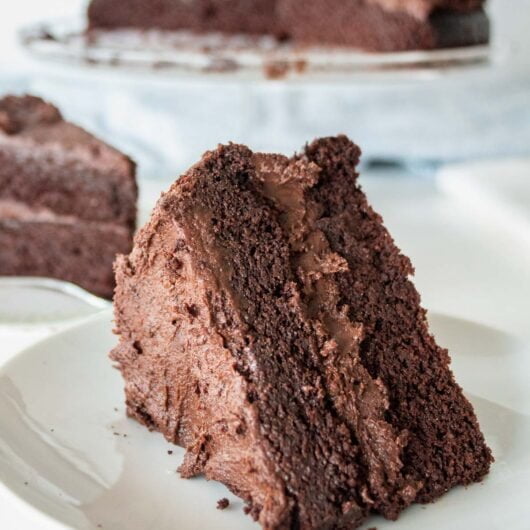
ALMOND FLOUR CHOCOLATE CAKE – LOW SUGAR
Fall in love with this deliciously rich and moist gluten-free, diabetic almond flour chocolate cake with reduced carbs and sugar. An indulgent dessert that keeps blood sugar levels steady.
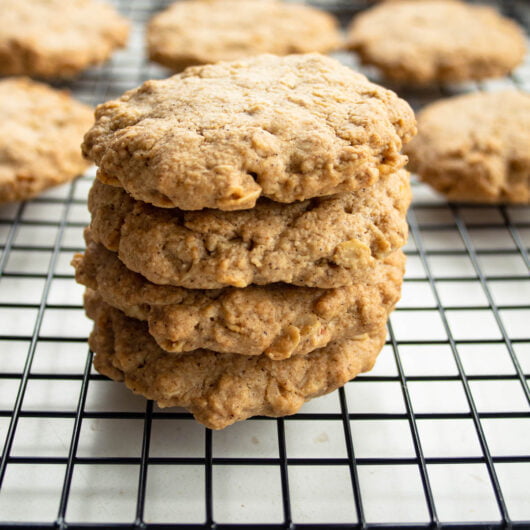
SIMPLE SUGAR FREE OAT BISCUITS
These super simple sugar free oat biscuits are quick and easy to make, healthier and kinder on blood sugar levels.

APPLE CRUMBLE WITH OATS NO FLOUR
Everyone needs a brilliant apple crumble recipe and this lower-carb, gluten and refined sugar-free apple crumble with oats (no flour) will not disappoint!
But don’t stop here, check out my sweet treats section for lots more blood sugar-friendly, nutritious delights.
Explore Baking with Sugar Substitutes
Finding joy in the foods we can savour builds a positive relationship between well-being and eating. Whether it’s the zest of a lemon garnishing a low-sugar muffin or the crunch of a nut-infused cookie, these subtle baking choices underscore the joy that can be found in adapting and broadening our food choices.
Diabetic-friendly baking may seem daunting at first. Discovering that I could use xylitol instead of traditional sugar was a revelation for both my daughter’s health and our friends and family’s enjoyment. Recognising the benefits this small change brought to managing her Type 1 diabetes highlighted the power of informed food choices. This journey is more than just about what we eat; it’s about enhancing our lives without feeling deprived of the joys of delicious treats.
Try to see the introduction of sugar substitutes in your kitchen as more than a dietary restriction. View it as an opportunity to explore new foods, potentially improve health outcomes, and expand your baking skills. The impact on blood glucose levels and overall control of diabetes can be significant, which ultimately can support you in a journey to a more balanced approach to your diet.







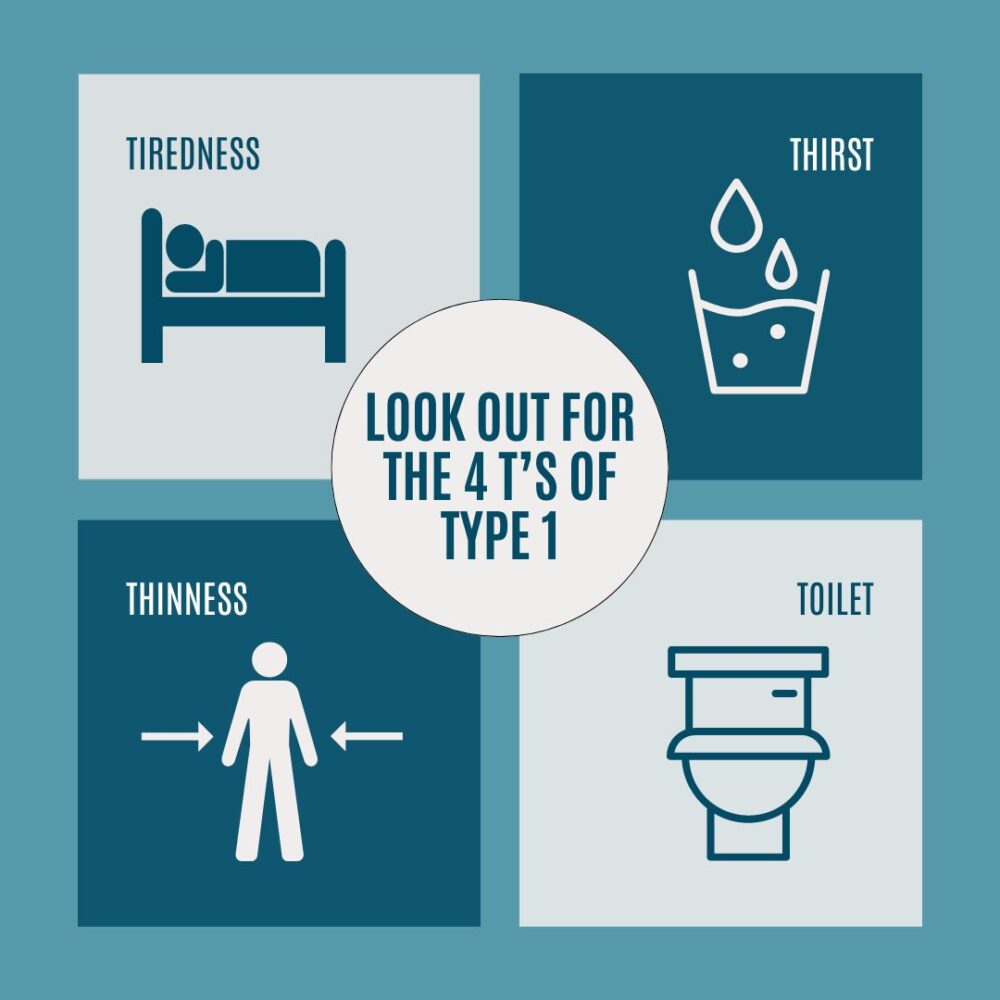
Leave a Reply